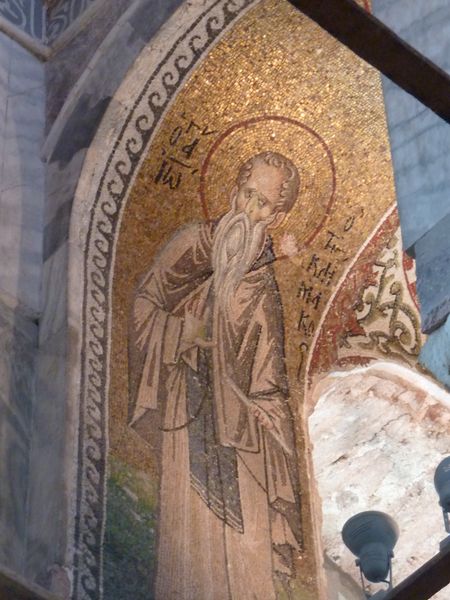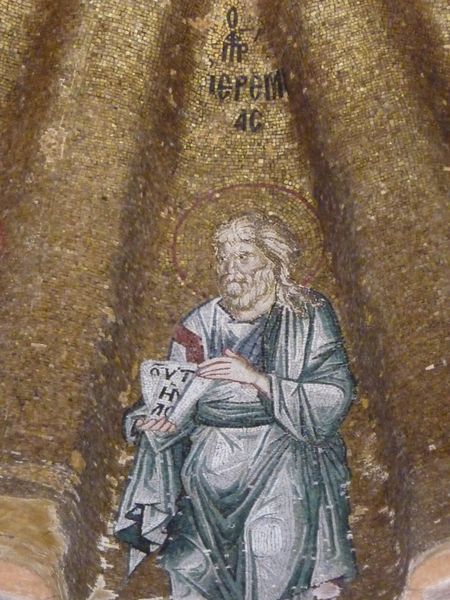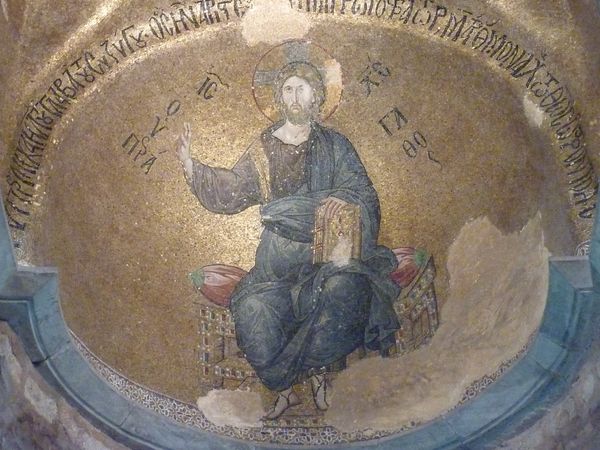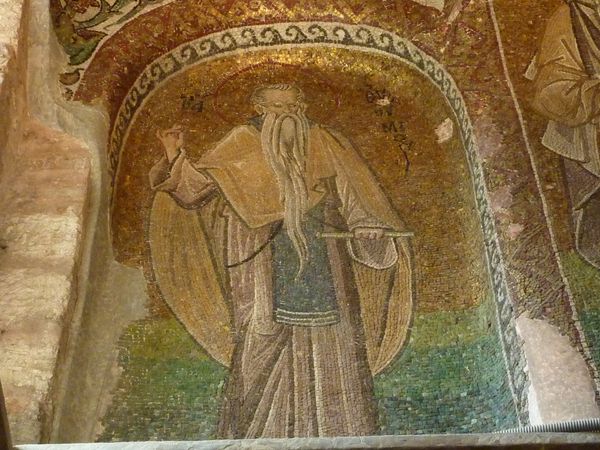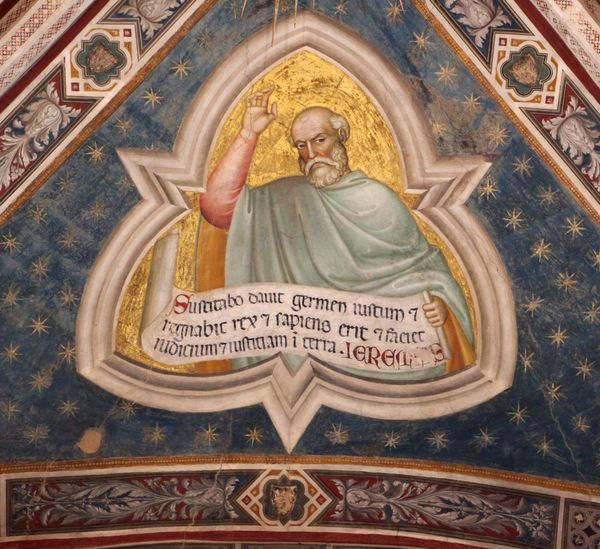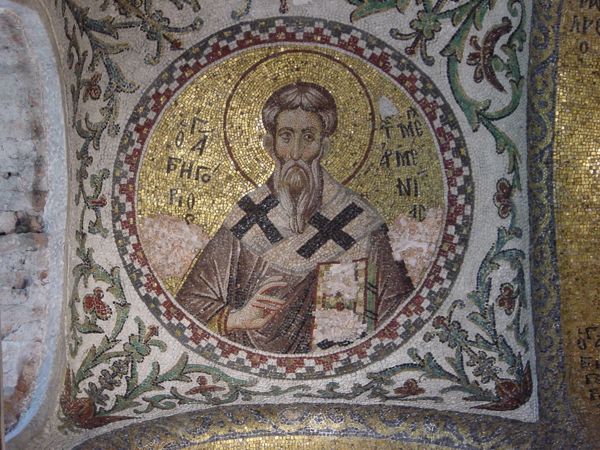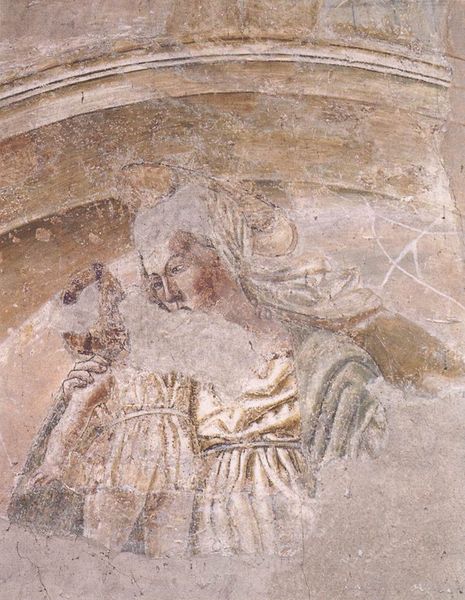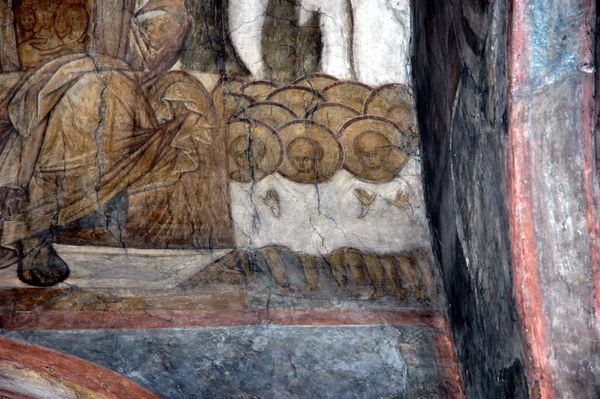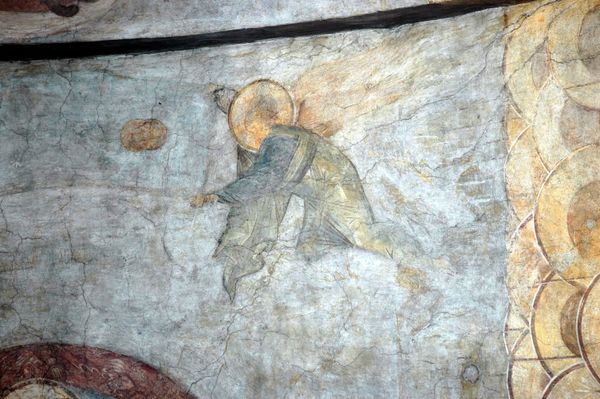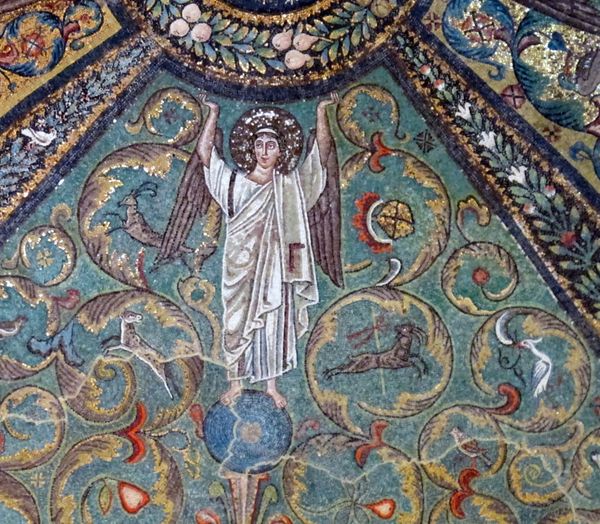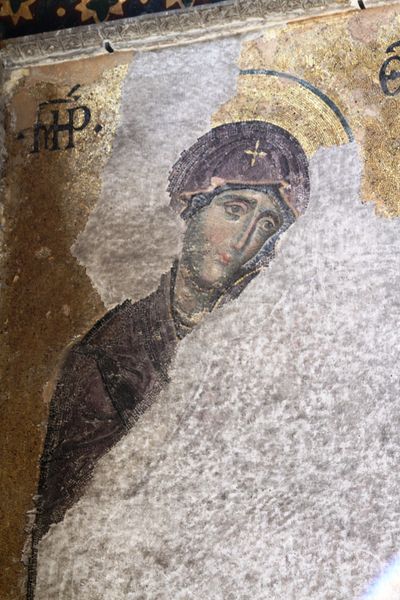
mosaic
#
mosaic
#
byzantine-art
#
medieval
#
figuration
#
history-painting
Copyright: Public domain
Curator: Look at the expressiveness captured within this late Byzantine mosaic dating from around 1300, depicting Moses, found in the Pammakaristos Church in Istanbul. What are your initial thoughts? Editor: It’s stunning. I’m immediately struck by the sheer materiality of it – all those tiny tesserae creating texture and a play of light that suggests movement and depth within the figure's drapery, and how the background reflects the lighting so that it gives off a glow. Curator: Yes, it’s fascinating to consider the cultural and artistic context. Think of Istanbul in 1300—a city undergoing shifts of power, the church acting as both a religious space and a symbol of authority. The choice to depict Moses here likely served specific theological and political purposes. Editor: Absolutely, it speaks to the commissioning power. I wonder about the artisans, their training, their status, how they meticulously placed each piece. The labour involved is enormous; the materials costly and freighted with symbolic value themselves: stone, glass, perhaps even gold. That investment signifies a wealthy patron wanting to convey meaning. Curator: Precisely, the materials dictate meaning here, serving more than a visual purpose. The placement of this mosaic within the Pammakaristos Church highlights the continuing artistic and political legacies associated with byzantine artistry at the time of its creation. What did that imply about religious beliefs at that specific place and moment? Editor: And it raises further questions – who was accessing these spaces and consuming these images? We can read social hierarchies by studying who commissioned artworks like these, who made them, who could afford them, and also by considering what kind of devotional act it signifies? What sort of access would that community even have? Curator: An important distinction. How socio-political contexts shape art reception. It's not just about what the artwork means, but *who* decides its meaning over time, influenced as that always is by religious and imperial history. Editor: In thinking about the material and labour going into creating an artwork, versus what that imagery represented is crucial for considering cultural meaning making in late-Byzantine works of art. Curator: Indeed. We often treat art as separate from social forces, but it's deeply entrenched. Considering those links enriches the experience. Editor: Exactly, this work asks about its function within community and society during an extremely culturally significant period of artistic exchange.
Comments
No comments
Be the first to comment and join the conversation on the ultimate creative platform.
